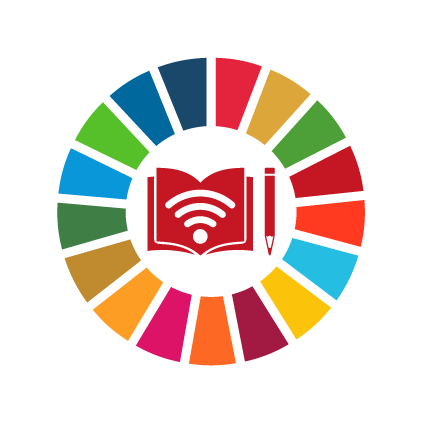India
Background Information
Region
South Asia
World Bank income group
Lower middle income
Percent of population aged 10-24
26% (UNFPA, 2023)
Total primary school age population (both sexes)
120,307,241 (UIS, 2023)
Total secondary school age population (both sexes)
175,517,260 (UIS, 2023)
Proportion of women aged 20-24 years who were married or in a union before age 18
(% of women aged 20-24)23%
Source: UNSDG , 2021
Adolescent birth rate
(per 1,000 women ages 15-19)11
Source: UN Human Development Reports , 2019
Percentage of women who ever experienced physical violence since age 15
(% of women 15-49)29%
Source: DHS , 2021
Percentage of married women employed in the last 12 months
(% of married or in-union women 15-49)38%
Source: DHS , 2021
Education Snapshot Back to Top
Number of years of free primary and secondary education guaranteed in legal frameworks
(Years)8
Source: UIS , 2022
Percentage of upper secondary schools providing life skills-based HIV and sexuality education within the formal curriculum or as part of extra-curricular activities
Percentage of schools100%
Source: UNESCO , 2022
Proportion of schools with access to single-sex basic sanitation facilities
Percentage of schools-
Primary 98%
(2022)
-
Lower secondary 99%
(2022)
-
Upper secondary 100%
(2022)
Source: UIS
Women as a percentage of teachers in tertiary education
Women as a percentageSource: UIS , 2022
Men as a percentage of teachers in pre-primary education
Men as a percentageSource: UIS , 2022
Expenditure on education as a percentage of total government expenditure
% GDP spent on educationSource: UIS , 2021
Gender parity index for achievement in mathematics, by education level (ratio)
No data available
Gender parity index for achievement in reading, by education level (ratio)
No data available
Proportion of students at the end of primary education achieving at least a minimum proficiency level in reading
-
Female 47%
-
Male 45%
Female: UIS, 2017
Male: UIS, 2017
Proportion of students at the end of primary education achieving at least a minimum proficiency level in mathematics
-
Female 44%
-
Male 44%
Female: UIS, 2017
Male: UIS, 2017
Experiencing bullying in the last 12 months in lower secondary education
No data available
Youth not in education, employment or training
-
Female 44%
-
Male 14%
Female: ILO, 2021
Male: ILO, 2021
Completion rate
Primary school age
-
Female 91%
-
Male 92%
Female: UIS, 2016
Male: UIS, 2016
Lower secondary school age
-
Female 79%
-
Male 82%
Female: UIS, 2016
Male: UIS, 2016
Upper secondary school age
-
Female 40%
-
Male 46%
Female: UIS, 2016
Male: UIS, 2016
Out-of-school rate
Primary school
-
Female 6%
-
Male 6%
Female: UIS, 2016
Male: UIS, 2016
Lower secondary school
-
Female 10%
-
Male 9%
Female: UIS, 2016
Male: UIS, 2016
Upper secondary school
-
Female 26%
-
Male 21%
Female: UIS, 2016
Male: UIS, 2016
Legal Frameworks Back to Top
Presence of legislation on child protection, to prevent corporal punishment in schools
3
Limited protection from violence in educational institutions
Source: HerAtlas , 2019
Presence of legislation protecting the right to education without discrimination based on sex/gender
2
Only enshrines the right to education or provides for a limited protection of this right
Source: HerAtlas , 2019
Presence of legislation to protect and facilitate education of pregnant adolescent girls
2
No explicit protection of the right to education of pregnant and parenting girls
Source: HerAtlas , 2019
Existence of processes to support coordinated action on gender equality in and through education by ministries, civil society, youth organizations and other actors
Data coming soon!
Existence of systematic processes to review and update curricula and learning resources, with a view to eradicating gender stereotypes and promoting gender equality
Data coming soon!
Training on gender-responsive pedagogies is embedded in teacher training programmes
Data coming soon!
Programs Back to Top
Project/Program
Adolescent Empowerment Programme
Project/Program
After School Life Skills Programme
Advocacy Campaign/Project
A More Equal Future: A MenCare Manual to Engage Fathers to Prevent Child Marriage in India
Network/Convening/Conference
Asia Pacific Region National Education Coalitions COVID-19 Zoom Conference
Government Programs Back to Top
Project/Program
Adolescent Girls' Programming Community of Practice
Project/Program
Samagra Shiksha
Project/Program
Kishori Shakti Yojana
Project/Program
Rapid Reporting System For Adolescent Girls
Policy & Frameworks Back to Top
Framework
National Guidelines and Implementation Framework on Equitable and Inclusive Education
This framework emphasizes collaboration on an international level in key areas such as developing culturally sensitive curricula that address gender, cultural identity, and language development, as well as tackling issues related to dropout rates and retention, particularly among girls and transgender children. In addition, there is the provision of a Gender-Inclusion Fund to provide equitable quality education and for assisting female and transgender children in gaining access to education through different mechanisms such as making provisions of sanitation and toilets, bicycles, conditional cash transfers, etc.
